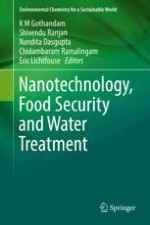This book reviews advanced nanotechnology in food, health, water and agriculture. In food, nanobiosensors display an unprecedented efficiency for the detection of allergens, genetically modified organisms and pathogens. In agriculture, nanofertilisers improve plant nutrition by releasing nutrients slowly and steadily. Nanomaterials synthesised using biomass such as fungi are further found remarkable to clean waters polluted by heavy metals. However, as newly introduced materials in the environment, nanoparticles may exhibit toxic effects, which are reviewed in this book. In the context of climate change, methods for water desalinisation are also presented.
